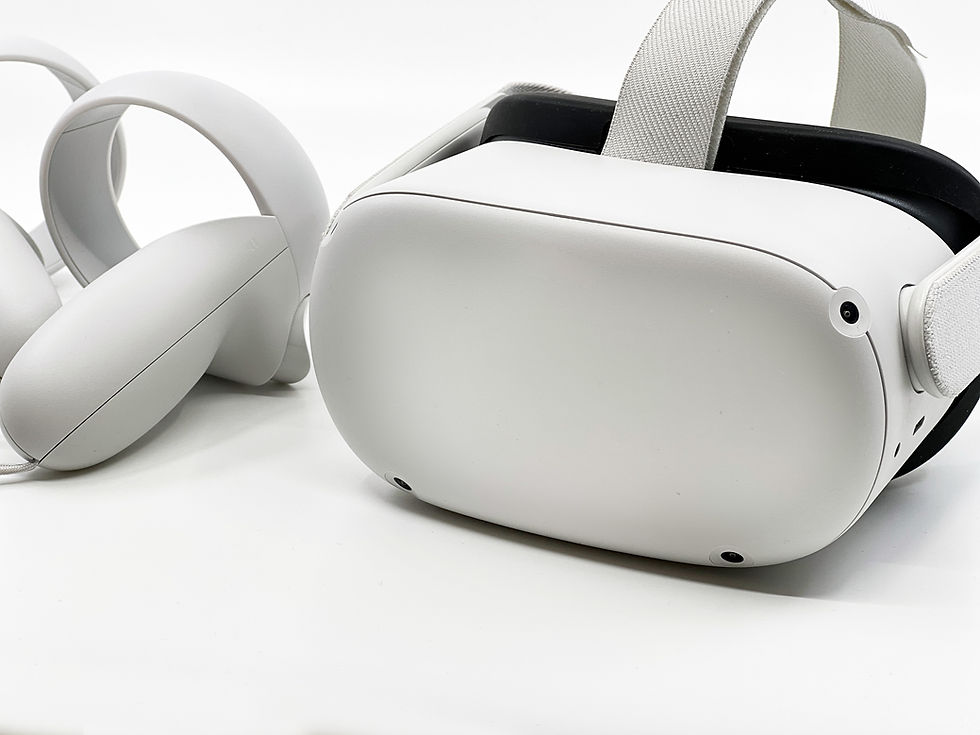Immersive Learning & Training
- Mark Cullens
- Jan 17, 2024
- 3 min read
Immersive learning and training, leveraging technologies like Virtual Reality (VR), Augmented Reality (AR), and Mixed Reality (MR), are revolutionizing knowledge sharing across various sectors. These technologies offer significant advantages in user engagement, retention, and real-world application.

Key Takeaways
AR, VR, and MR simplify complex subjects and enable efficient global training.
Improves employee retention and performance, reducing training time and costs.
Customizable learning experiences adapt to individual paces and provide personalized feedback.
Data-driven insights for improved training effectiveness.
Cost-effective with significant ROI in engagement and reduced time to competence.
What is Immersive Learning?
A New Era of Educational Methodology
Immersive learning is an interactive educational method that uses VR, AR, and MR to create hands-on experiences. It emphasizes active participation and practical application, contrasting traditional passive learning methods.
Immersive vs. Experiential Learning
Understanding the Differences
While both immersive and experiential learning are interactive, immersive learning specifically utilizes digital technologies to create simulated environments, offering a more engaging and versatile learning experience.
Benefits of Immersive Training and Learning
Transforming Education and Corporate Training
Immersive learning offers improved retention, emotional connection, contextual understanding, and a safe learning environment. It caters to various learning styles and significantly impacts ROI by enhancing learner engagement and performance.
Examples of Immersive Learning Technology
VR, AR, and Simulation Training
These technologies are used in various fields like healthcare, education, and corporate training, providing realistic simulations and interactive learning experiences.

Implementing Immersive Training Programs
Steps to Success
Successful implementation of immersive training requires a methodical approach, including selecting the right technology, designing for interaction, and ensuring accessibility.
Budget Considerations
Planning Your Investment
Implementing immersive training involves considering hardware and software costs, content development, infrastructure upgrades, and ongoing maintenance.
Measuring the Impact of Immersive Training
Evaluating ROI
Key Performance Indicators (KPIs) like pre- and post-assessment performance, skill retention, user engagement, and cost-benefit analysis are crucial in measuring the effectiveness of immersive training programs.
Frequently Asked Questions About Immersive Learning
Addressing Common Concerns
Key FAQs include addressing accessibility for individuals with disabilities, challenges in implementation, ensuring data privacy and security, and strategies for smaller organizations with limited budgets.
Relevant YouTube Videos
Internal Links from Digital Energy Group
External Links
Immersive learning and training, leveraging technologies like Virtual Reality (VR), Augmented Reality (AR), and Mixed Reality (MR), are revolutionizing knowledge sharing across various sectors. These technologies offer significant advantages in user engagement, retention, and real-world application.
Key Takeaways
AR, VR, and MR simplify complex subjects and enable efficient global training.
Improves employee retention and performance, reducing training time and costs.
Customizable learning experiences adapt to individual paces and provide personalized feedback.
Data-driven insights for improved training effectiveness.
Cost-effective with significant ROI in engagement and reduced time to competence.
What is Immersive Learning?
A New Era of Educational Methodology
Immersive learning is an interactive educational method that uses VR, AR, and MR to create hands-on experiences. It emphasizes active participation and practical application, contrasting traditional passive learning methods.
Immersive vs. Experiential Learning
Understanding the Differences
While both immersive and experiential learning are interactive, immersive learning specifically utilizes digital technologies to create simulated environments, offering a more engaging and versatile learning experience.
Benefits of Immersive Training and Learning

Transforming Education and Corporate Training
Immersive learning offers improved retention, emotional connection, contextual understanding, and a safe learning environment. It caters to various learning styles and significantly impacts ROI by enhancing learner engagement and performance.
Examples of Immersive Learning Technology
VR, AR, and Simulation Training
These technologies are used in various fields like healthcare, education, and corporate training, providing realistic simulations and interactive learning experiences.
Implementing Immersive Training Programs
Steps to Success
Successful implementation of immersive training requires a methodical approach, including selecting the right technology, designing for interaction, and ensuring accessibility.
Budget Considerations
Planning Your Investment
Implementing immersive training involves considering hardware and software costs, content development, infrastructure upgrades, and ongoing maintenance.
Measuring the Impact of Immersive Training
Evaluating ROI
Key Performance Indicators (KPIs) like pre- and post-assessment performance, skill retention, user engagement, and cost-benefit analysis are crucial in measuring the effectiveness of immersive training programs.
Frequently Asked Questions About Immersive Learning
Addressing Common Concerns
Key FAQs include addressing accessibility for individuals with disabilities, challenges in implementation, ensuring data privacy and security, and strategies for smaller organizations with limited budgets.
Relevant YouTube Videos
Immersive Learning in Actionhttps://www.youtube.com/watch?v=GT2kYCX9wNs
Examples of AR and VR in Training https://www.youtube.com/watch?v=JTJSu5H6eGA
Real-World Applications of Mixed Realityhttps://www.youtube.com/watch?v=_EfKA2RdSbY
Internal Links from Digital Energy Group
External Link
Author Bio
Mark Cullens is the founder of Digital Energy Group Ltd and brings 30 years of experience in marketing leadership. Working with immersive technologies s in the real world of Universities, Local Authorities and Colleges gives him a practical insight into the unique benefits and challenges of using VR and AR.




Comments